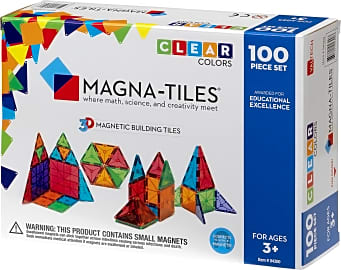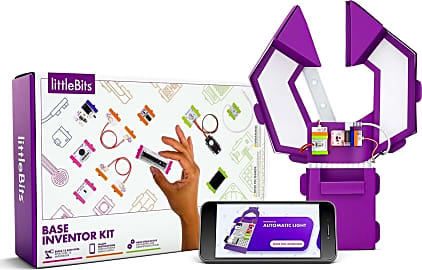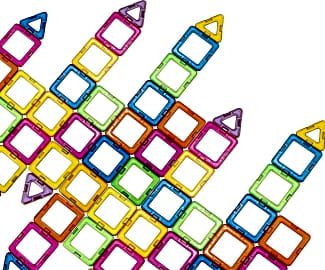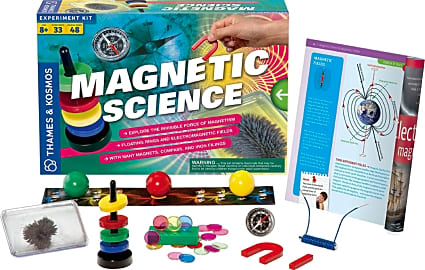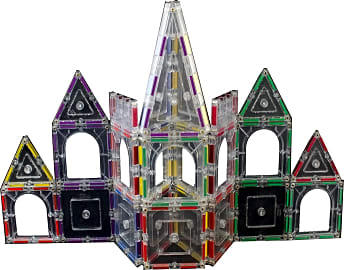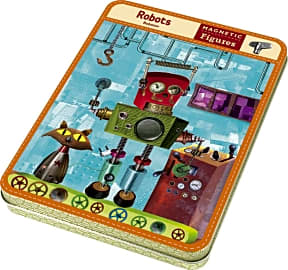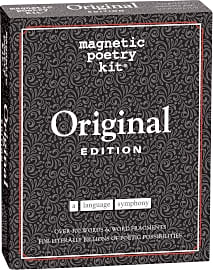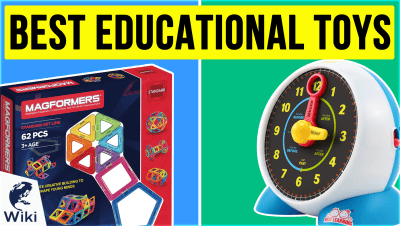The 10 Best Magnetic Toys

This wiki has been updated 44 times since it was first published in January of 2016. You’re sure to engage a child’s curiosity with one of these magnetic toys that will not only provide hours of fun, but can also help to improve shape recognition, hand-eye coordination, and fine motor skills. The choices here are suitable for a wide range of ages, and include building sets that allow kids to unleash their creativity, and interactive games that teach youngsters their letters. When users buy our independently chosen editorial picks, we may earn commissions to help fund the Wiki.
Editor's Notes
December 04, 2019:
In this update we added a couple of educational toys geared toward preschoolers that incorporate magnets. The LeapFrog Fridge Phonics has been around for decades and is a great way to help kids learn letters and sounds. When they put one of the letter tiles onto the school bus base (which attaches securely to your fridge or another magnetic surface), a voice will say the letter and the sound it makes. If they tap the tile after that, the voice will use the letter in a word and then a sentence. It also plays three catchy tunes, including “The Alphabet Song” and “Wheels on the Bus.”
Also joining our list is the Melissa & Doug Julia Dress-Up, from a manufacturer who sells various tried-and-true toys, many of them magnetic. This particular set brings you a wooden doll and various magnetic pieces you can attach to her to make her a doctor, an astronaut, a firefighter, a police officer, a superhero, and more. Kids will also enjoy mixing it up with different tops and bottoms.
Leaving our selection today is the Woodlev Levitron, a floating globe that’s a cool concept, but many report it’s difficult to set it up and generally isn’t very durable. Also making its departure is the Holy Stone Doodle Sketch, which is unavailable at this time.
You’ll be happy to know that many of our magnetic toy selections also happen to be toys that foster STEM learning, and kids will have fun without even realize they’re playing with something educational.
Small magnets can pose life-threatening risks when swallowed, so be sure to follow a manufacturer’s stated age guidelines when giving any magnetic toy to a child – and always be sure to supervise children with their toys for a safe playtime. As a rule, always keep small magnets away from young children who might swallow them.
Special Honors
Sharper Image Magnetic Metal Beads Designed for those 14 years of age or older, these 64 beads can bring hours of engagement (and stress relief) as you use them to assemble geometric shapes, solve puzzles, and make any creation you can imagine. They’re made of iron ceramic ferrite magnets and will make a nice conversation piece after you’ve assembled them (into a pyramid, a square, a sphere, a ball, etc.) and placed the finished product on your desk. Your creation can even serve as a handy small paperweight. sharperimage.com
Magbot Magnetic Block Set Your little ones’ imaginations will run wild when they build a character from the set of blocks that are made of sustainably harvested wood decorated with vibrant blue accents. Each is printed with nuts and bolts, so kids can mix and match different components into just the design for them. It’s made in Honduras with rare earth magnets. uncommongoods.com
Single People Make Good Magnets
In some elements, each of those spinning electrons has a partner that opposes it in the direction of its spin.
In the 21st century, more and more of the toys our children acquire are, in one way or another, electric. From handheld gaming devices to smartphones, all of these electric devices are inherently also magnetic. That's because magnetism and electricity are largely two sides of the same coin. When a magnet attracts a piece of metal to it, it does so by inducing an electrical current at the atomic level that causes the metal to experience a force pulling it toward the magnet.
When we talk about magnetic toys, however, we're referring to much more obvious magnets, to permanently magnetic pieces of iron composite that conveniently snap together to create an educational, and often architectural experience for children. There are a few magnetic toys on our list that are a little more adult-oriented, of course, but who ever said toys were just for kids?
Magnetic force is directional, which is why those traditional bar magnets have an N and an S for north and south respectively printed on their opposite poles. To understand how natural or mechanical forces can establish that direction, we have to look at the atoms that make up the bar.
An atom has a certain number of electrons in orbitals around a nucleus. These electrons, rather like planets orbiting a star, have each their own spin. In some elements, each of those spinning electrons has a partner that opposes it in the direction of its spin. One electron spinning clockwise has a partner spinning counterclockwise to complement it.
Other elements, however, have one or more rogue electrons who come stag to the prom, without a partner in tow. If a force acts on these electrons to influence the direction of their spin, the electromagnetic current gains directional specificity, and a magnetic field generates around the atom, flowing south to north in the direction of the spin.
That atom has essentially become a magnet, and a material like iron (which has four such rogue electrons per atom), when magnetized, will maintain its induced magnetic direction. That allows north to stay north and south to stay south, allowing one piece of a magnetic children's toy set to attract and stick to another.
Attractive To Everybody
Given the endlessly variegated uses for even the most common magnets, it makes sense that there are equally variegated options among magnetic toys on the market. Figuring out which of those toys will make a proper gift (even if you give that gift to yourself) will depend largely on the person receiving the magnets.
Given the endlessly variegated uses for even the most common magnets, it makes sense that there are equally variegated options among magnetic toys on the market.
Some of the magnetic toys sets on our list are clearly intended to stimulate a young person's architectural curiosity. They use magnetic edges in much the way that Lego sets use snapping plastic fittings to create cohesion between and among building blocks. These sets are great for kids from the lowest recommended age groups on up, as they provide meaningful lessons in spacial relations to the youngest kids, and opportunities for more nuanced artistic expression among the older boys and girls.
The magnetic toys on our list that are less centered around the act of building usually have some scientific bent to them, as they give children an opportunity to explore the practical truths about magnetic interactions. While these sets might not go very far to explain why magnetism works, they will build a fundamental understanding of the science's tenets in whomever uses them.
Among the sets on our list that would make better toys for slightly older demographics, you'll find sets that utilize neodymium and other highly magnetic elements to create elaborate and often artistic shapes. These magnets are extremely powerful, however, and they're very easy to accidentally ingest if left in the presence of a very small child or an animal. More than one of these magnets in a mammalian digestive tract usually spells surgery or death, so beware.
Across The Magnetic Field
If Max Eisenhardt, better known to many as Magneto, wants to get in touch with his mutant roots, he's going to have to take a trip to Turkey. In Turkey, in a town currently called Mansia, but known in antiquity as Magnesia, magnetic lodestone was discovered and used by the people of the Middle East and Europe, giving the magnet its name.
Even before those days, however, the ancient Chinese had already begun to utilize the powers of magnets to guide the organization of their living spaces toward an ultimate harmony. That practice, which has been co-opted by endless Western interior decorators, is known as Feng Shui.
In the 13th century, navigators began to use magnetic compasses to determine their routes of transit, and more scientific studies of magnetism continued, leading eventually to a comprehensive theory of electromagnetism posited by James Clerk Maxwell in the 19th century.
Our atomic understanding of magnetism wouldn't develop until the 20th century, and the specifics of that science continue to evolve as quantum physicists study the complex reactions of magnetic structures at a sub-atomic level. Will their studies have much of an impact on the world of toys? Probably not one that you can see in toys as simple as these, but those more highly complex electrical devices will benefit from an ever-deepening understanding of those forces.


